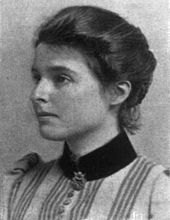Collective bargaining theory refers to studies carried out by UK political economist Alfred Marshall (1842-1924) into the negotiation of wage rates and conditions of employment by representatives of the labor force (usually trade union officials) and management.
Collective bargaining is a process of negotiation between employers and a group of employees aimed at agreements to regulate working salaries, working conditions, benefits, and other aspects of workers’ compensation and rights for workers. The interests of the employees are commonly presented by representatives of a trade union to which the employees belong. The collective agreements reached by these negotiations usually set out wage scales, working hours, training, health and safety, overtime, grievance mechanisms, and rights to participate in workplace or company affairs.
The union may negotiate with a single employer (who is typically representing a company’s shareholders) or may negotiate with a group of businesses, depending on the country, to reach an industry-wide agreement. A collective agreement functions as a labour contract between an employer and one or more unions. Collective bargaining consists of the process of negotiation between representatives of a union and employers (generally represented by management, or, in some countries such as Austria, Sweden and the Netherlands, by an employers’ organization) in respect of the terms and conditions of employment of employees, such as wages, hours of work, working conditions, grievance procedures, and about the rights and responsibilities of trade unions. The parties often refer to the result of the negotiation as a collective bargaining agreement (CBA) or as a collective employment agreement (CEA).
History
The term “collective bargaining” was first used in 1891 by Beatrice Webb, a founder of the field of industrial relations in Britain. It refers to the sort of collective negotiations and agreements that had existed since the rise of trade unions during the 18th century.
United States
In the United States, the National Labor Relations Act of 1935 made it illegal for any employer to deny union rights to an employee. The issue of unionizing government employees in a public-sector trade union was much more controversial until the 1950s. In 1962 President John F. Kennedy issued an executive order granting federal employees the right to unionize.
An issue of jurisdiction surfaced in National Labor Relations Board v. Catholic Bishop of Chicago (1979) when the Supreme Court held that the National Labor Relations Board (NLRB) could not assert jurisdiction over a church-operated school because such jurisdiction would violate the First Amendment establishment of freedom of religion and the separation of church of state.
International protection
Ronald Reagan, Labor Day Speech at Liberty State Park, 1980
The right to collectively bargain is recognized through international human rights conventions. Article 23 of the Universal Declaration of Human Rights identifies the ability to organize trade unions as a fundamental human right.Item 2(a) of the International Labour Organization’s Declaration on Fundamental Principles and Rights at Work defines the “freedom of association and the effective recognition of the right to collective bargaining” as an essential right of workers. The Freedom of Association and Protection of the Right to Organise Convention, 1948 (C087) and several other conventions specifically protect collective bargaining through the creation of international labour standards that discourage countries from violating workers’ rights to associate and collectively bargain.
In June 2007 the Supreme Court of Canada extensively reviewed the rationale for regarding collective bargaining as a human right. In the case of Facilities Subsector Bargaining Association v. British Columbia, the Court made the following observations:
The right to bargain collectively with an employer enhances the human dignity, liberty and autonomy of workers by giving them the opportunity to influence the establishment of workplace rules and thereby gain some control over a major aspect of their lives, namely their work… Collective bargaining is not simply an instrument for pursuing external ends…rather [it] is intrinsically valuable as an experience in self-government… Collective bargaining permits workers to achieve a form of workplace democracy and to ensure the rule of law in the workplace. Workers gain a voice to influence the establishment of rules that control a major aspect of their lives.
Empirical findings
- Union members and other workers covered by collective agreements get, on average, a wage markup over their nonunionized (or uncovered) counterparts. Such a markup is typically 5 to 10 percent in industrial countries.
- Unions tend to equalize the income distribution, especially between skilled and unskilled workers.
- The welfare loss associated with unions is 0.2 to 0.5 percent of GDP, which is similar to monopolies in product markets.
Sweden
In Sweden the coverage of collective agreements is very high despite the absence of legal mechanisms to extend agreements to whole industries. In 2017, 83% of all private sector employees were covered by collective agreements, 100% of public sector employees and in all 89% (referring to the whole labor market). This reflects the dominance of self-regulation (regulation by the labour market parties themselves) over state regulation in Swedish industrial relations.
Collective bargaining generally involves the joint regulation of agreed procedures.
Also see: countervailing power, syndicalism


It is really a great and helpful piece of info. I’m glad that you shared this helpful info with us. Please keep us informed like this. Thanks for sharing.